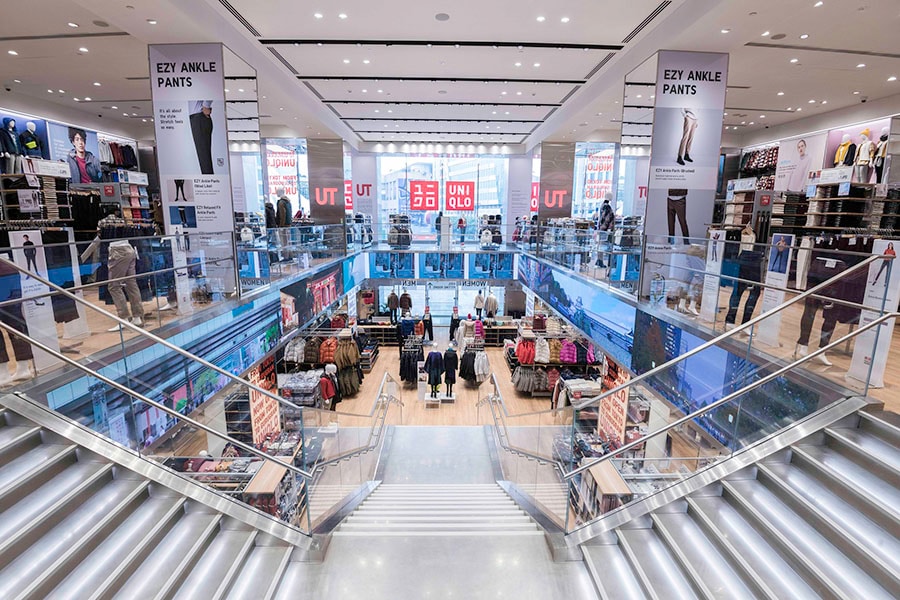
The Japanese takeover
Japanese brands like Muji, Wacoal and Uniqlo are expanding their presence in the country and serenading Indian wallets with ease
 UNIQLO DLF CyberHub with its unmatched denims and woollens, came to New Delhi in 2019 and is arriving with aplomb in Mumbai in October with its dynamic line-up of products.
UNIQLO DLF CyberHub with its unmatched denims and woollens, came to New Delhi in 2019 and is arriving with aplomb in Mumbai in October with its dynamic line-up of products.
Global Japanese retailer Muji is set to unfurl across a mega plush expanse in Jio Plaza in Mumbai’s BKC. In its seventh year in India, the brand continues to wow Indians with its organic cotton offerings in clothes, and minimalistic household goods. Lingerie major Wacoal too has mushroomed pan-India selling skilfully engineered, long-lasting innerwear across a cross-section of age groups at competitive prices. Uniqlo, with its unmatched denims and woollens, came to New Delhi in 2019 and is arriving with aplomb in Mumbai in October with its dynamic line-up of products. Call it the great Japanese takeover. With their fast-paced, dynamic cuts in fuss-free contours, Japanese wear is serenading Indian wallets with limpid ease.
What's With It?
It has been a quiet, consistent growth in the lifestyle segment for Japanese brands on home turf over the past few years. Whether it is the arrival of the much-loved soy sauce brand Kikkoman (courtesy Harry Hakuei Kosato), the gobsmacking success of sushi cakes, arrival of one-dollar akin stores in Usupso and Miniso, or the growth of Washoku (the traditional Japanese dietary culture hinged on respect for nature) in hospitality and beyond.How are we Indians, given to a touch of flamboyance and swish by nature, taking to the simplicity and minimalism of Japanese cuts? Says Pooja Merani, COO, Wacoal India, “Our lingerie solutions focus on quality comfort (using premium materials for all-day comfort), inclusivity (flattering styles in keeping with Indian body types), elegant design (aesthetic appeal with functional excellence), and perfect fit (no compromise on secure fit and support). The idea is to empower women to embrace and express their individual beauty. This principle drives our product development and manufacturing, and has fostered a sense of long-term loyalty among our customers in India.”
With over 65 per cent of the Indian population below 35 years of age, aspirational and trend-savvy, the dynamics of growth are mind-boggling. While none of the Japanese brands carve out a budget for traditional advertising, they are tearing through the Indian skies with growth figures to match. Wacoal India brags of a presence across India through 20 Exclusive Brand Outlets (EBOs) and over 40 Large Format Stores (LFS). “Additionally, we have significantly expanded our presence in the general trade (MBO) channel, establishing 80+ Point of Sale (POS) locations across the country,” says Merani adding that Wacoal has been seeing brisk business on its own website and across major online retail platforms post the pandemic plunge point. The brand hosted a fashion show last year, netting eyeballs and tipping the scales in favour of its glam allure, and is set to add 100 new POS to its kitty in India.







